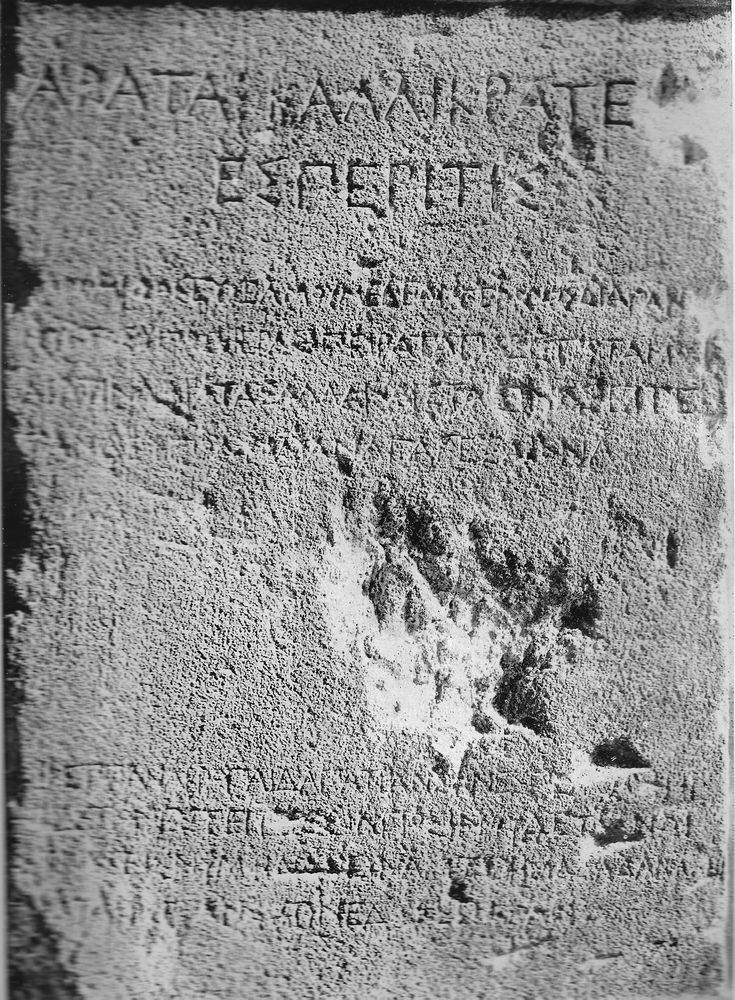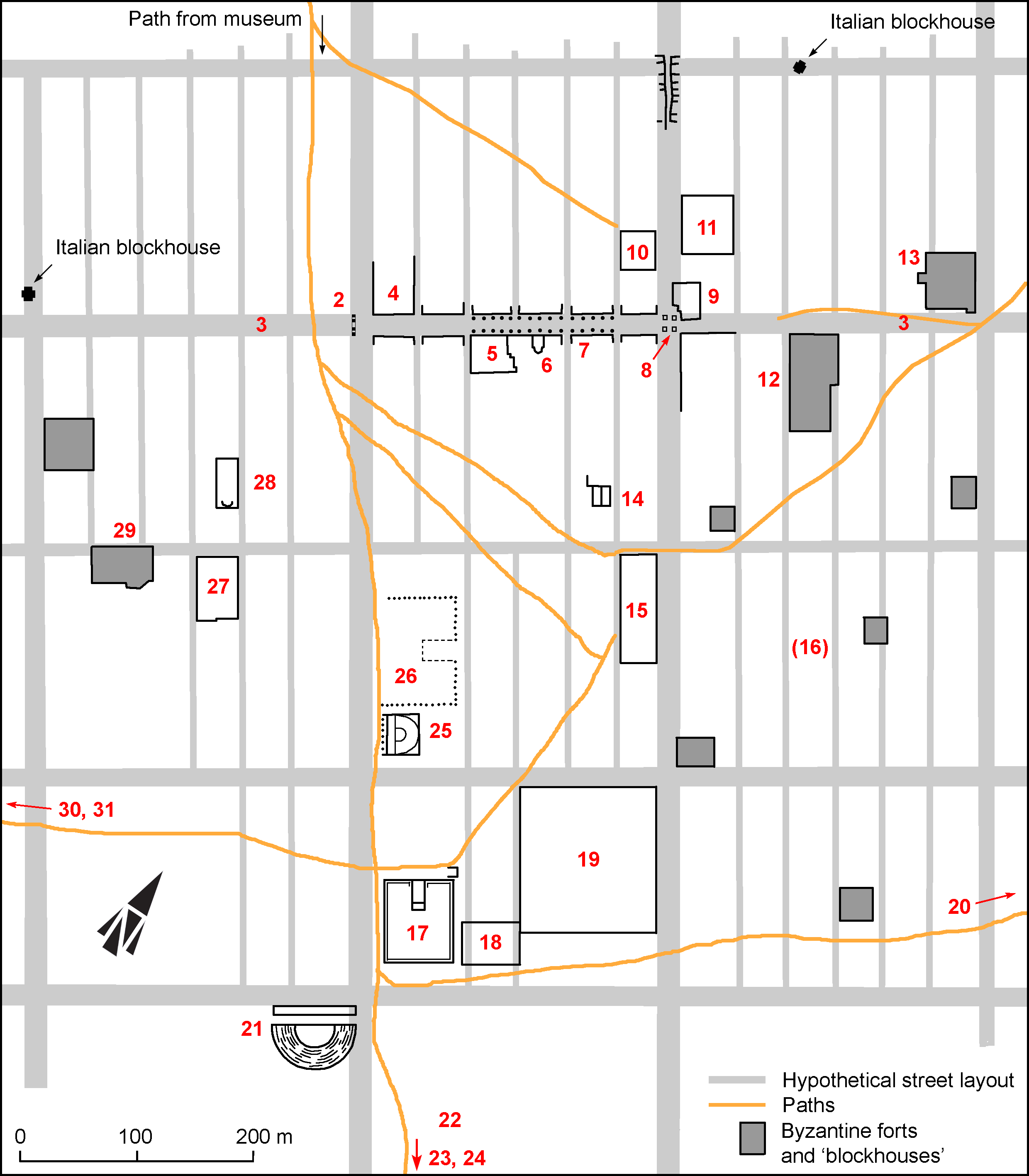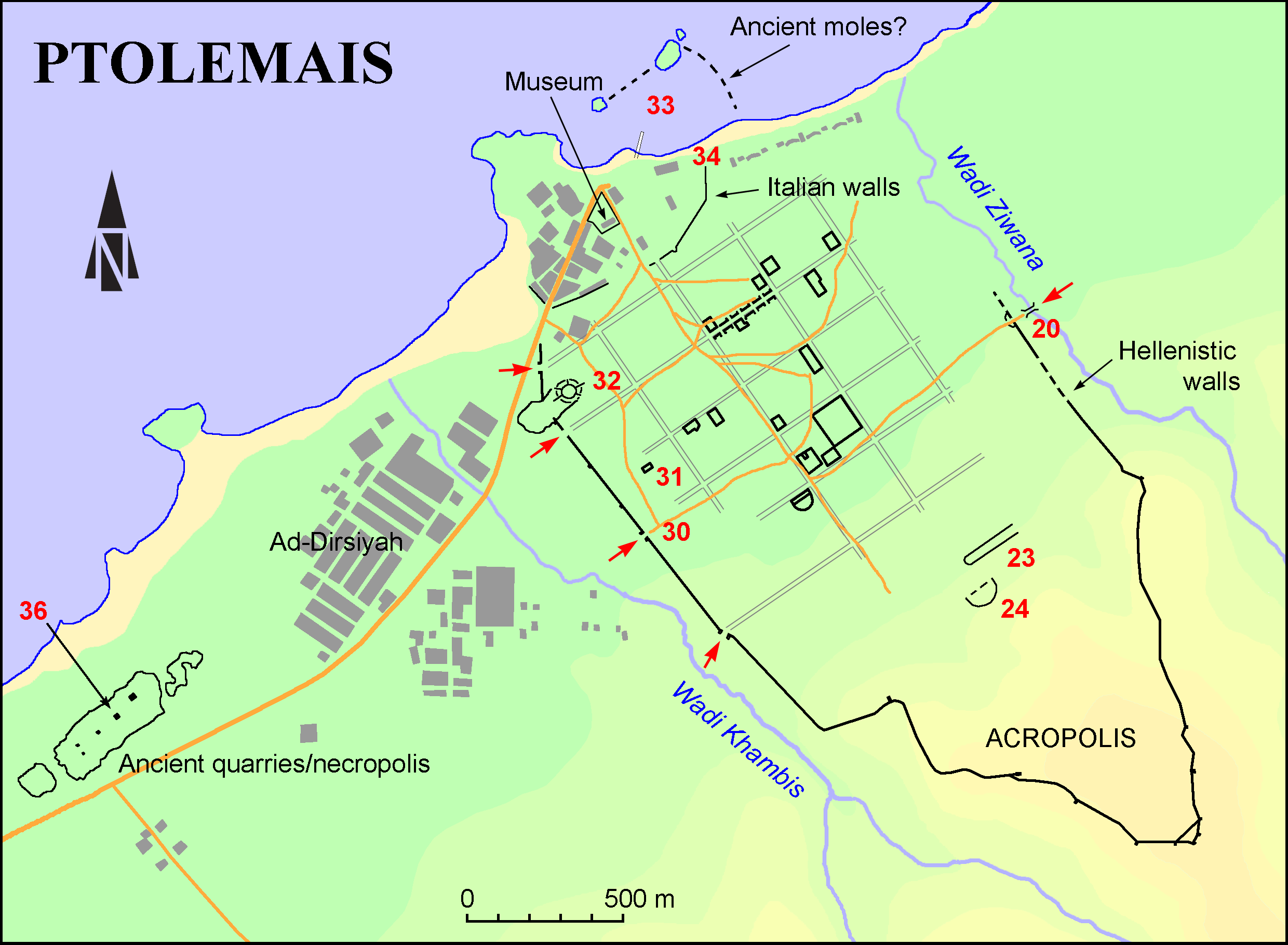Support: Limestone stele surmounted by a pediment with acroteria (out of which two are now lost)
and projecting moulding below it; a hole on the front face does not affect the inscription
(w: 0.30 × h: 0.69 × d: 0.075).
Layout: Inscribed on front face on 2 lines with axial layout,
then 2 groups of 4 lines aligned at left and separated by a vacat
(width 0.30).
Letters: Lines 1-2: 0.023; l. 3 on: 0.008-0.015; no serifs, smaller round letters, slanting sigma.
Date: Late fourth or early third century BC (lettering).
Findspot: Found before 1935 at
Ptolemais ➚, at the time
port of Barka: plausibly from the West Necropolis.
Place of origin: Findspot.
Last recorded location:
Seen by G. Oliverio before 1935 at Al Marj
Barce Museum.
Not seen by GVCyr team; studied from photograph.
Text constituted from: Transcription from editor.
French translation
Arata fille de Kallikratès, d'Euhespérides.
Vieillard, maître de la barque aux bons bordages, qui dans ta navigation
franchis les limites du fleuve sous la nuit ombreuse,
as-tu jamais vu une vertu surpassant celle d'Arata, s'il est vrai que
tu l'as débarquée sur la rive sinistre?
Jamais plus tu ne verras ta patrie aux enfants délicats, l'Hespéride,
ni l'époux que tu chérissais, jamais pour ton enfant
tu ne prépareras la couche nuptiale. Ah vraiment, la divinité,
Arata, a fixé pour toi une glaçante malédiction!
English translation
Arata daughter of Kallicrates, from Euesperides.
Old man, master of the well-planked boat, who sails
through the limits of the river under the shady night,
did you ever see a virtue higher than that of Arata, if you did
bring her to the gloomy shore?
Never will you see again your country with delicate children, Hesperis,
nor will you see your beloved husband, nor will you for your child
prepare a bridal couch. Truly, a deity,
Arata, decided for you an icy malediction!
Italian translation
Arata figlia di Kallikrates, di Euesperides.
E tu vecchio, signore della barca dal robusto fasciame, che nella notte fosca
da una sponda all'altra percorri il fiume,
hai mai visto una virtù superiore a quella di Arata, se davvero
l'hai condotta alla riva oscura?
Né più mai la tua patria vedrai dai delicati fanciulli, l'Hesperis,
né il tuo sposo che amavi, né a tua figlia
preparerai il letto nuziale. Ah davvero, la divinità,
Arata, ti ha destinato una maledizione di ghiaccio!
Arabic translation
أراتا ابنة كاليكراتيوس من يوسبيريديس. الرجل العجوز، سيد القارب ذو المجاديف الجيدة، الذي يبحر عبر حدود النهر تحت جُنح الظلام
(الليل المظلم)، هل رأيت من قبل فضيلة أعلى (مرتبة) من فضيلة أراتا، إذا رأيت ذلك أحضرها إلى الشاطئ الكئيب؟ لن تري أبدًا بلدك،
هيسبيريس، مرة أخرى بوجود أطفال حساسين (مرهفي الإحساس)، ولن ترين زوجك الحبيب ولا (يُمنكنك) تحضيرإو تجهيز أريكة الزفاف لطفلك.
حقًا يا أراتا، المُؤله، قدر لك لعنه باردة (شديدة)!



